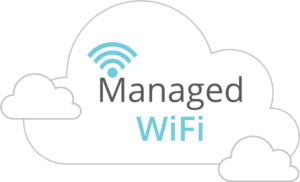
Should You Provide Managed Wi-Fi in the Customers Home?
Table of Contents
As carriers move towards Fixed Wireless solutions and become a WISP they are faced with this difficult question.
Should I provide managed Wi-Fi in my customers home?
There is no right or wrong answer to this question, instead the question really is, how much risk do I want to take on to own the home?
This is no small question because homes are becoming smart, users are data hungry and this market is not going away any time soon. Customers want Internet of Things (IoT) but they don't always know exactly what they want. This gap can be filled by wireless carriers operating as a WISP and it all starts with how to own the home. The very first and most significant foray is to decide if taking on the risk of managing the Wi-Fi is feasible or should we focus on smaller things like IoT sensors.
In telecommunications these devices are called customer premises equipment (CPE) and can be anything from an outdoor wireless modem, a router, or a set-top box used to connect to the carriers network. These devices can be purchased by the customer or could be provided free or on rental from the carrier that allows the device to connect to its infrastructure. For the purposes of this article we are discussing a CPE that is a managed Wi-Fi solution sold to the customer and kept at the customers home.
The Downsides of Managed Wi-Fi solutions for WISPs
Providing a managed Wi-Fi solution has some significant risks that are not all controllable however it is important to weigh them. The biggest concern is how you will manage getting the equipment in the customers hands that is reliable and feasible. Things to consider include
- How you will supply and manage the inventory and hardware used to support the CPE effort?
- How far is the customer from support or will there be a truck roll for every issue?
- Can you provide a self-install process to allow remote installations?
- What is it going to cost to acquire each customer?
You also need to consider long-term equipment support. These devices should perform for five to 10 years minimum. Replacing the company provided device will come at a cost, the customer should not be forced to pay for an upgrade to their equipment unless they are buying something on their own. WISPs also need to consider whether or not they should stay with the current equipment provider or find greener pastures. Migrating to a new vendor also means learning new systems, a new monitoring dashboard. These costs to educate staff cannot be overlooked.
Carriers need to consider what implementing a CPE based solution will cost. This can be a long and expensive rollout depending on how many customers are acquired.
Lastly, and the most unpredictable problem is the end-user themselves. Once a device is in the home, installed and working, the customer could do anything to cause potential issues. Maybe they plugged a wire in to the wrong port or they have decided to put their wi-fi router in a Faraday cage just to see what could happen. Issues with this lead to longer support calls as reps will need to ask well defined questions to eliminate user-created issues.
The Upsides of Managed Wi-Fi solutions for WISPs
 To understand the benefits of managing Wi-Fi in the customers home we have to understand the customer mentality. Customers often equate Wi-Fi to their internet connection. This is not a new thought process and the reason it is ingrained in subscribers mindsets is that traditional ISPs often provide a modem/router combination device that generally does an okay job. The truth is that when possible, separating these two functions can provide a better experience since each device is purpose built for its function. Managing these devices independently provides greater troubleshooting granularity.
To understand the benefits of managing Wi-Fi in the customers home we have to understand the customer mentality. Customers often equate Wi-Fi to their internet connection. This is not a new thought process and the reason it is ingrained in subscribers mindsets is that traditional ISPs often provide a modem/router combination device that generally does an okay job. The truth is that when possible, separating these two functions can provide a better experience since each device is purpose built for its function. Managing these devices independently provides greater troubleshooting granularity.
There are several companies ( Minim and Calix are two) that provide a router-level managed solution that operates over-the-top of the router software. These solutions provide in-depth analysis of customer network architecture to enable better troubleshooting.
Often times a customer complaint about internet is not the outdoor modem in a Fixed Wireless deployment, it's actually the router they are using. During the pandemic more complaints arose from Wi-Fi related issues as individuals working from home sought out quiet corners of the home to work from. These corners often provide thready connections leading to frustration and perceived outage.
- A managed Wi-Fi solution can see signal strength and determine the user is farther from the signal than is ideal.
- Managed Wi-Fi solutions can see when other Wi-Fi signals are causing interference. I'll address why Wi-Fi bands are split the way they are in the future.
- Allows your technical support staff to have confidence in the information they provide to the customer instead of just making a guess based on limited information the customer has given them.
- Managed Wi-Fi solutions often come with a mobile app to help customers Self-Service many issues.
- Removal of troubleshooting complicated network architecture since the router is a tested and approved device
Those are just some benefits from a technical standpoint but a company also has to consider how to provide value-added features.
Managed Wi-Fi Adding Value and Increasing Revenue
A customer should have the right to user whatever router they would like and a business should support that. This provides freedom to the customer and is a simple no-cost value added benefit. Consumers do not like to feel locked-in. On the other hand a business must define a clear demarcation point where their staff can no longer invest time and resources in to supporting a customers issues once they are certain the modem providing the connection is working properly.
This is where a representative should be upselling your customer! Let them know you have a managed W-Fi solution that may help ease their woes for an additional monthly fee. You can call it a pro-services offering or some other marketing title I am not qualified to determine. In offering a way to manage wi-fi for the customer you can increase revenue streams and provide ease of mind.
This pro-service offering can tie in the cost of the router billed over time (Cost of Goods Sold), along with the support your staff is already giving (Sunk Cost). Providing pro-services at $10-15 a month when consumers typically replace their router every 4-5 years means that over time, your company makes back it's investment many times over.
Should You Manage Wi-Fi in the Customers Home?
There is no right and wrong answer to this question. It still comes down to the amount of risk a company wants to assume. Inventory management, staff education, customer education, marketing, and the managed solution operating expense cost itself are all things that must be weighed before proceeding.
Managed Wi-Fi CPEs are not the only solutions out there and businesses should be looking at all options before diving in to one over the other. There are several CPE-agnostic software solutions available. I will cover some of those in the future.
The problem is that time is of the essence and WISPs need to move quickly to make that decision.
If you are interested in learning about additional solutions you can contact me and we can discuss your needs for a half-hour at no cost to you.
If you enjoyed this content, please consider subscribing to get future updates!

